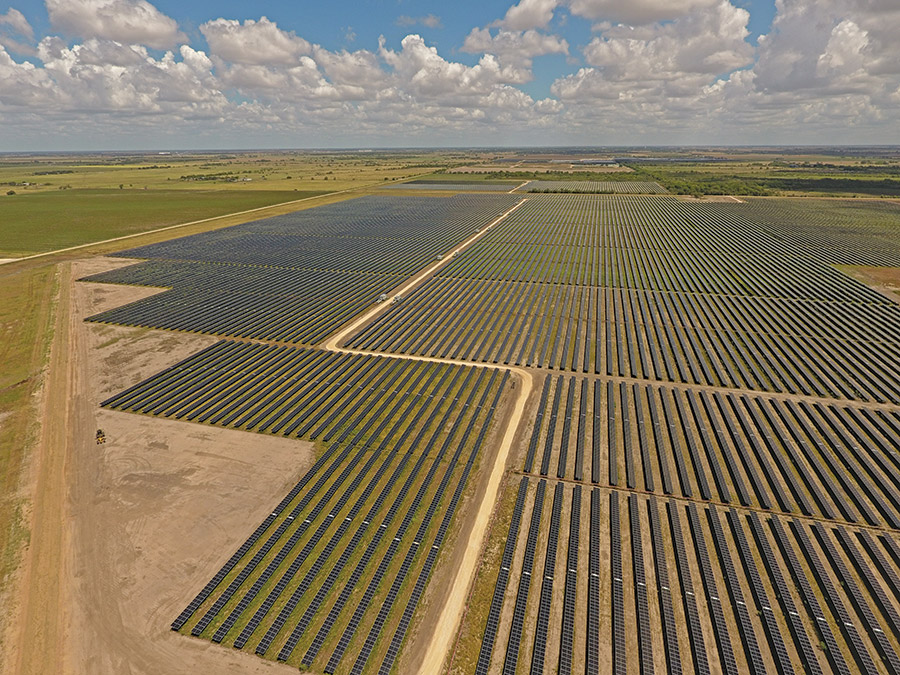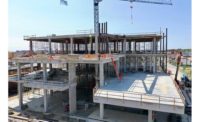Related Link:
ENR Texas & Louisiana 2022 Top Specialty Contractors
Specialty contractors in the five-state region of Arkansas, Louisiana, Mississippi, Oklahoma and Texas reported strong performance in 2021, according to the results of ENR Texas & Louisiana’s annual Top Specialty Contractors survey. While still contending with pandemic-related issues, such as finding skilled workers, supply chain delays and material prices and availability, specialty firms are finding ways to succeed.
“The market is somewhere in between strong and lagging, maybe a ‘solid-type’ range,” says Kyle Holland, president/CEO of Associated General Contractors of America’s Houston chapter. “There is work out there; it just might not be the kind of work everyone is used to performing, so subcontractors might be shifting their strategies as to which sectors they pursue.”
One chapter member, J.P. Martinez, vice president of Pieper-Houston Electric, adds: “Our market has become very diverse over the traditional oil-and-gas dominance.” Private-sector construction, especially offices, is currently lagging, Martinez says, adding that health care, public/government work, higher education and K-12 construction “are still pretty solid.”
The Austin, San Antonio and Dallas markets remain robust, he adds, also noting several health care projects in the greater Houston area, including the Texas Medical Center 3 campus.
In Baton Rouge, Ken Naquin, executive director of the local AGC chapter, calls that area’s market “strong.” Commercial projects are especially prominent, he says, noting projects at the Medical Center at the University of Louisiana in Monroe, the expansion of the New Orleans Convention Center and several projects on the Louisiana State University and University of Louisiana at Lafayette campuses.
Challenges Demand Solutions
Early involvement in contracts is one way specialty contractors are working to improve project outcomes.
“The industry as a whole is dealing with increased costs and workforce challenges, but Rosendin is proactive in working with contractors and subcontractors to identify areas for greater efficiencies starting during preconstruction,” says Shaun Mahan, division manager for the Pflugerville, Texas, office of electrical contractor Rosendin.
ENR’s national 2022 Top 600 Specialty Contractors list ranked Rosendin No. 10, while this year’s Texas/Louisiana Top Specialty Contractors list ranks the company seventh. Currently, the firm is completing the Aktina Solar Facility, 90 miles southwest of Houston, for Tokyo Gas America.
“In some ways, the pandemic forced all contractors to be more efficient with their work and to constantly be more diligent in planning things out,” AGC Houston’s Holland says. “And many of those efficiencies have stuck around.”
Market uncertainties have affected positioning for future projects. James B. Rutland, president and CEO of Baton Rouge-based electrical contractor MMR Group, says, “Unpredictable supply chain and material costs have made lump-sum proposals more difficult.” MMR’s recent projects include providing electrical and instrumentation services for steel and metal recyclers, automobile manufacturing facilities and data centers. The company ranked third on this year’s Top Specialty Contractors list.
Rutland attributes this success to expansion into new markets, including mission-critical construction/data centers, the semiconductor industry, automobile manufacturing, pharmaceuticals, steel, mining and metals. Two recently completed projects include the Calcasieu Pass LNG plant in Cameron, La.—one of the first greenfield LNG export projects to be constructed in the U.S. and the fastest large-scale greenfield LNG facility ever built—and the Gulf Coast Growth Ventures (GCGV) petrochemical complex in Gregory, Texas.
On the GCGV plant project—which produces polyethylene and monoethylene glycol and is among the world’s largest ethylene cracker plants—MMR performed electrical installation and sitewide civil services and trained and supported more than 5,000 employees on site.
Throughout the region, finding skilled labor remains a major issue, both for meeting existing demand and attracting workers to replace those aging out to retirement.
“The workforce shortage continues to be an issue, with nearly all subcontractors struggling to find a consistent source of skilled labor,” says Holland. “We have an aging workforce, with many nearing retirement, and we do not yet have a steady stream of craftworkers coming into the construction industry.” Holland adds that the labor shortage makes scheduling increasingly challenging.
Martinez adds, “This retirement of skilled workers has exacerbated the labor challenges already faced in the industry.”
Lead times on equipment and gear often exceed pre-pandemic deliveries at four times the norm, Martinez adds, noting that “although material prices appear to have settled, they’re well above pandemic levels, and labor costs continue to rise.”

Rosendin is completing the Atkina Solar Facility, 90 miles southwest of Houston, for Tokyo Gas America.
Photo courtesy Rosendin
Embracing the Future
Into 2023, Holland believes that subcontractors will depend on the industry sector that they predominantly work in. “Public work is still going to remain strong, as is the health care sector, particularly in Houston, but the private side may be a bit slower,” he says.
Considering recent relocations to Texas, Martinez expects that health care, K-12 and higher-education sectors will remain solid as will community projects, such as churches, retail centers and smaller enterprise. On the other hand, softening and lagging markets are office and hospitality. “Privately backed developments are increasingly being shelved or terminated, especially with inflation concerns,” he explains.
For Louisiana, Naquin believes that as increased infrastructure spending occurs, the private development market will increase with it. He says that the state has appropriated more than $1.4 billion for renovations on the state’s university campus, and he anticipates this work continuing for the next six years.
Rosendin’s Mahan says, “Next year has a very positive outlook with many sectors of work still flourishing in Texas/Louisiana, including high tech, mission critical data centers, renewable energy and more.”
MMR’s Rutland expects “an extreme uptick in industrial expansion and major manufacturing markets.” Renewables will also play a key role in shaping the industry. “We are looking to benefit from a resurgence in projects,” he says.
The top 25 specialty firms on this year’s list reported a combined $5.95 billion in revenue across the region, down $1.4 billion from the $7.35 billion reported last year. It should be noted that last year’s top-ranked firm, Mastec Inc., did not participate in this year’s survey.




